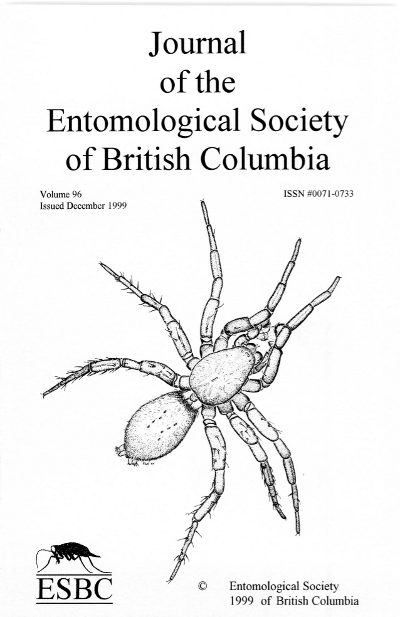The influence of orchard ground cover and introduced green lacewings on spring populations of western flower thrips in apple orchards
Abstract
Bare soil, grass and weedy ground covers were compared for their influence on population densities of western flower thrips, Frankliniella occidentalis (Pergande) (Thysanoptera:Thripidae), within a blossoming British Columbian apple orchard. Weedy ground cover harbored the thrips before and during their movement into the apple blossoms and more western flower thrips were found in the trees in weedy ground plots than in bare soil plots during the first week of bloom. These early season differences in thrips counts did not persist through thc season, and were not consistently reflected in the percent of apples damaged by the thrips. The F1 generation of western flower thrips in cluster samples were lower in trees where nymphs of the common green lacewing Chrysopa carnea (Stephens) (Neuroptera: Chrysopidae) were introduced at bloom. The introduced lacewings did not reduce thrips damage to the apples.
Key words: Frankliniella occidentalis; thrips; apples; ground cover
Downloads
Issue
Section
License
Authors who publish with the Journal of the Entomological Society of British Columbia agree to the following terms:
-Authors retain copyright and grant the journal right of first publication with the work simultaneously licensed under a Creative Commons Attribution License that allows others to share the work with an acknowledgement of the work's authorship and initial publication in this journal.
-Authors are able to enter into separate, additional contractual arrangements for the non-exclusive distribution of the journal's published version of the work (e.g., post it to an institutional repository or publish it in a book), with an acknowledgement of its initial publication in this journal.
-Authors are permitted and encouraged to post their work online (e.g., in institutional repositories or on their website) prior to and during the submission process, as it can lead to productive exchanges, as well as earlier and greater citation of published work (See The Effect of Open Access).


